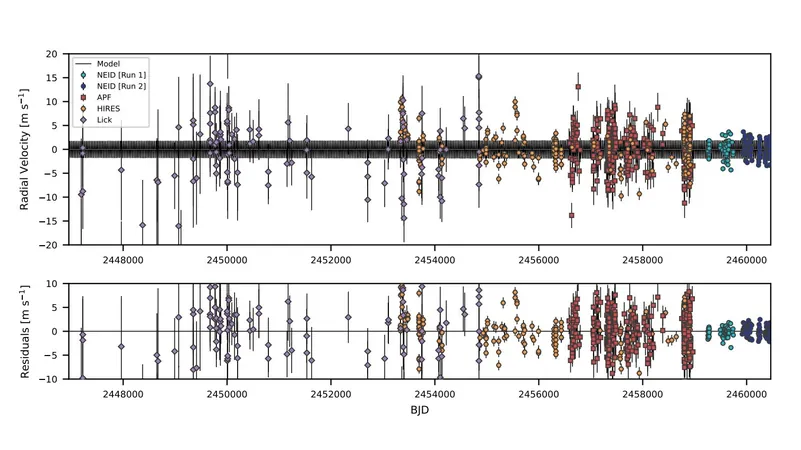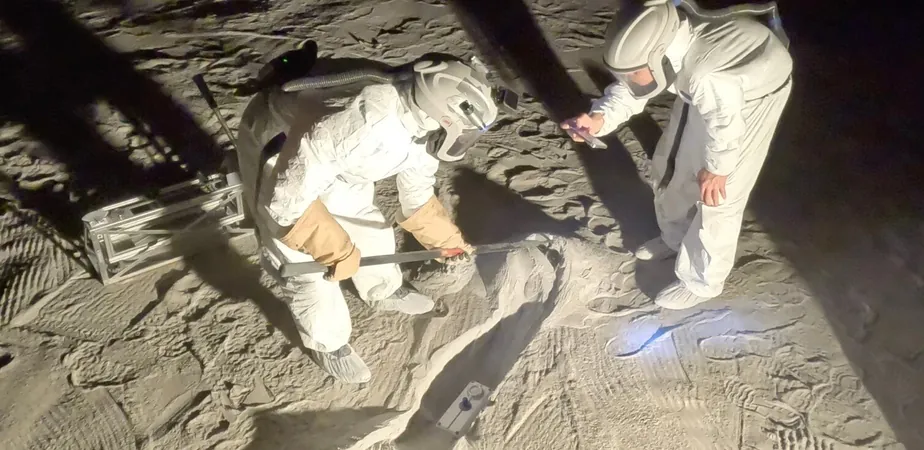
Breaking News: NEID Earth Twin Survey Unveils Its First Extra-Terrestrial Gem!
2024-09-26
Groundbreaking Discovery in Exoplanet Research
In a groundbreaking announcement, an international consortium of astronomers has successfully identified a new extrasolar planet orbiting the star designated HD 86728. This monumental discovery marks the very first exoplanet detected by the NEID Earth Twin Survey (NETS), a pioneering initiative aimed at uncovering low-mass planets around our nearest stellar neighbors. The findings were published in a research paper on September 18, accessible on the preprint server arXiv.
NEID: A State-of-the-Art Instrument
Operating from the renowned Kitt Peak National Observatory in Arizona, NEID is a state-of-the-art optical-near-infrared echelle spectrograph. It’s specially designed to conduct high-precision radial velocity measurements, a technique crucial for finding smaller planets that might resemble Earth.
The Research Team and Their Findings
The lead researcher, Arvind F. Gupta, from the U.S. National Science Foundation’s National Optical-Infrared Astronomy Research Laboratory, spearheaded a dedicated team that meticulously observed HD 86728, a bright G-type star situated approximately 48.6 light years from Earth. Over an extensive period of three years, with observations conducted on 137 separate nights, their efforts culminated in the confirmation of the exoplanet now named HD 86728 b.
Characteristics of HD 86728 b
The newly discovered planet completes an orbit around its star every 31.15 days, positioned at a mere 0.19 astronomical units—a distance considerably closer than that of Mercury to our Sun. Remarkably, HD 86728 b is projected to be about 9.16 times the mass of Earth, placing it among the category of super-Earths.
The Search for More Exoplanets
Interestingly, research indicates that the majority of exoplanets that share similar mass and orbital characteristics tend to exist within multi-planet systems. In the case of HD 86728 b, if it is indeed the only planet in its system, it would be part of a rare minority. Ongoing research and observations will be essential to confirm whether other planets might also orbit HD 86728.
Insights on the Host Star
As for the host star itself, HD 86728 shines with a radius roughly 1.24 times that of our Sun and possesses a comparable mass. With an effective temperature of about 5,610 K and a metallicity level of 0.2 dex, this star plays a crucial role in understanding the dynamics of its planetary system.
Conclusions and Future Directions
In a significant conclusion, the authors emphasize the value of advanced radial-velocity spectrograph technology in the quest for discovering low-mass exoplanets. They assert, “NEID and its counterparts will continue to refine our ability to detect subtle signals from distant stars, bringing us closer to identifying Earth-like worlds that may harbor life.
Anticipation of Further Discoveries
As the excitement builds, the astronomical community is eager for further observations, which could unveil even more secrets of the cosmos. Stay tuned as we unravel the mysteries of the universe, one planet at a time!


 Brasil (PT)
Brasil (PT)
 Canada (EN)
Canada (EN)
 Chile (ES)
Chile (ES)
 España (ES)
España (ES)
 France (FR)
France (FR)
 Hong Kong (EN)
Hong Kong (EN)
 Italia (IT)
Italia (IT)
 日本 (JA)
日本 (JA)
 Magyarország (HU)
Magyarország (HU)
 Norge (NO)
Norge (NO)
 Polska (PL)
Polska (PL)
 Schweiz (DE)
Schweiz (DE)
 Singapore (EN)
Singapore (EN)
 Sverige (SV)
Sverige (SV)
 Suomi (FI)
Suomi (FI)
 Türkiye (TR)
Türkiye (TR)